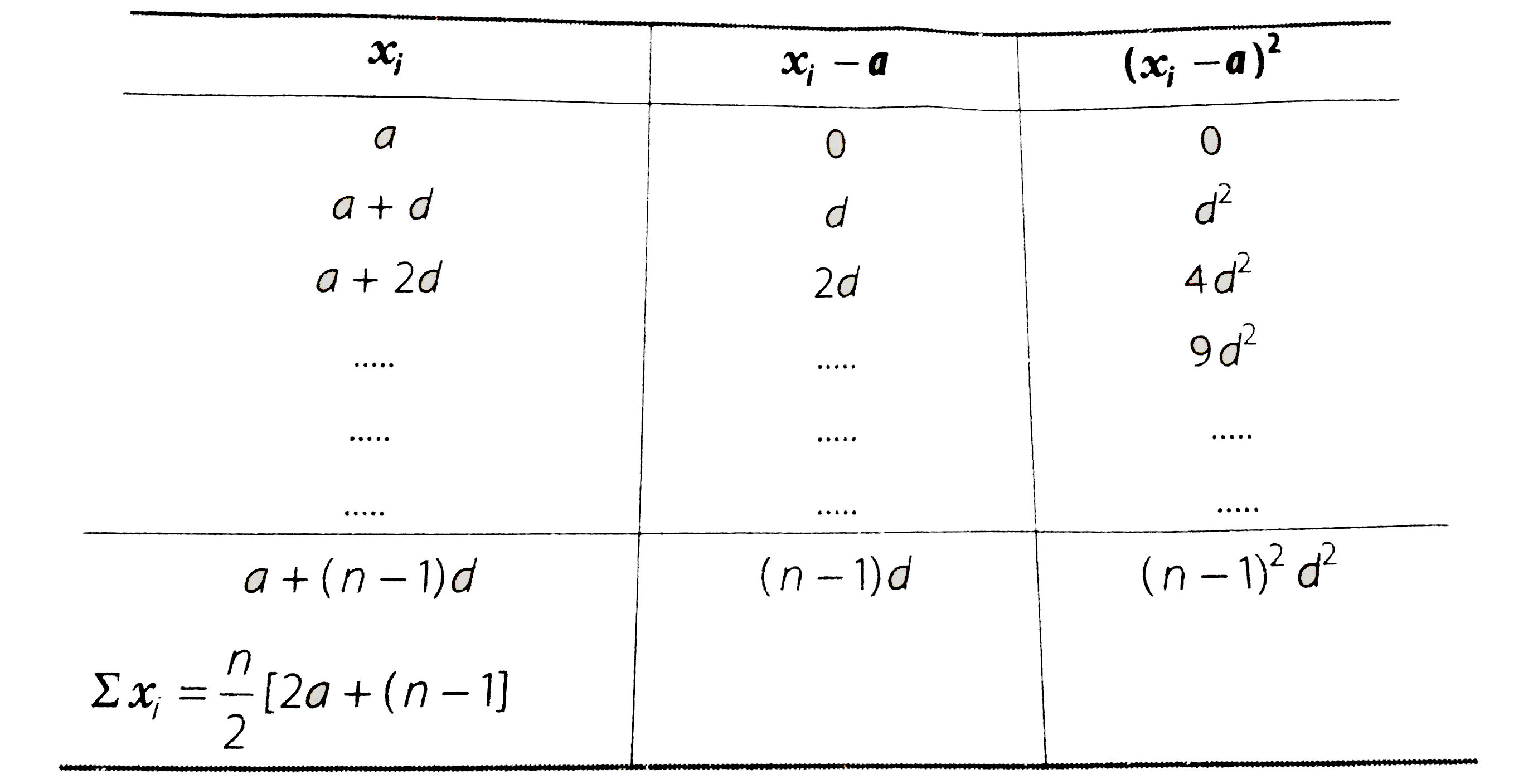The sum of the first n terms of an AP whose first term is 8 and the common difference is 20 is equal to the sum of first 2n terms of another AP whose first term is −30 and the common difference is 8. Find n.
To solve the problem, we need to find the value of n such that the sum of the first n terms of the first arithmetic progression (AP) is equal to the sum of the first 2n terms of the second AP.
1. Identify the first AP:
- First term a1=8
- Common difference d1=20
2. Use the formula for the sum of the first n terms of an AP:
Sn=n2(2a+(n−1)d)
For the first AP:
Sn=n2(2×8+(n−1)×20)
Simplifying this:
Sn=n2(16+20n−20)=n2(20n−4)=n(10n−2)
Let's call this Equation 1.
3. Identify the second AP:
- First term a2=−30
- Common difference d2=8
4. Use the formula for the sum of the first 2n terms of the second AP:
S2n=2n2(2a+(2n−1)d)=n(2(−30)+(2n−1)×8)
Simplifying this:
S2n=n(−60+16n−8)=n(16n−68)
Let's call this Equation 2.
5. Set the two sums equal to each other:
n(10n−2)=n(16n−68)
Since n is not zero, we can divide both sides by n:
10n−2=16n−68
6. Rearranging the equation:
10n−16n=−68+2
−6n=−66
Dividing both sides by -6:
n=11
Final Answer:
The value of n is 11.
- First term a1=8
- Common difference d1=20
Sn=n2(2a+(n−1)d)
For the first AP:
Sn=n2(2×8+(n−1)×20)
Simplifying this:
Sn=n2(16+20n−20)=n2(20n−4)=n(10n−2)
Let's call this Equation 1.
- First term a2=−30
- Common difference d2=8
S2n=2n2(2a+(2n−1)d)=n(2(−30)+(2n−1)×8)
Simplifying this:
S2n=n(−60+16n−8)=n(16n−68)
Let's call this Equation 2.
n(10n−2)=n(16n−68)
Since n is not zero, we can divide both sides by n:
10n−2=16n−68
10n−16n=−68+2
−6n=−66
Dividing both sides by -6:
n=11
The value of n is 11.
Topper's Solved these Questions
- BOOK - NCERT EXEMPLAR ENGLISHCHAPTER - ARITHMETIC PROGRESSIONSEXERCISE - Long Answer Type Questions10videos
ARITHMETIC PROGRESSIONS
- BOOK - NCERT EXEMPLAR ENGLISHCHAPTER - ARITHMETIC PROGRESSIONSEXERCISE - Very Short Answer Type Questions8videos
ARITHMETIC PROGRESSIONS
- BOOK - NCERT EXEMPLAR ENGLISHCHAPTER - AREAS RELATED TO CIRCLEEXERCISE - Long Answer Type Questions20videos
AREAS RELATED TO CIRCLE
- BOOK - NCERT EXEMPLAR ENGLISHCHAPTER - CIRCLESEXERCISE - EXERCISE 9.4 LONG ANSWER TYPE QUESTIONS14videos
CIRCLES
Similar Questions
The first four terms of an A.P. whose first term is -2 and the common difference is -2 are
View SolutionFind the mean of first n terms of an A.P. whose first term is a and common difference is d.
View SolutionFind the sum of first 25 terms of an A.P. whose nth term is 1−4n
View SolutionFind the sum of first 20 terms of an A.P. whose first term is 3 and the last term is 57.
View SolutionIf the first term of an AP is -5 and the common difference is 2, then the sum of the first 6 terms is
View SolutionIf the first term of an AP is -5 and the common difference is 2, then the sum of the first 6 terms is
View SolutionDetermin mean and standard deviation of first n terms of an AP whose first term is a and common difference is d.
 View Solution
View SolutionFind the mean and standard deviation of first n terms of an A.P. whose first term is a and common difference is d.
View SolutionFind the sum of the first 40 terms of the A.P. whose 4th term is 8 and 6th term is 14.
View SolutionFind the sum of first n term of the A.P., whose nth term is given by (2n+1).
View Solution

